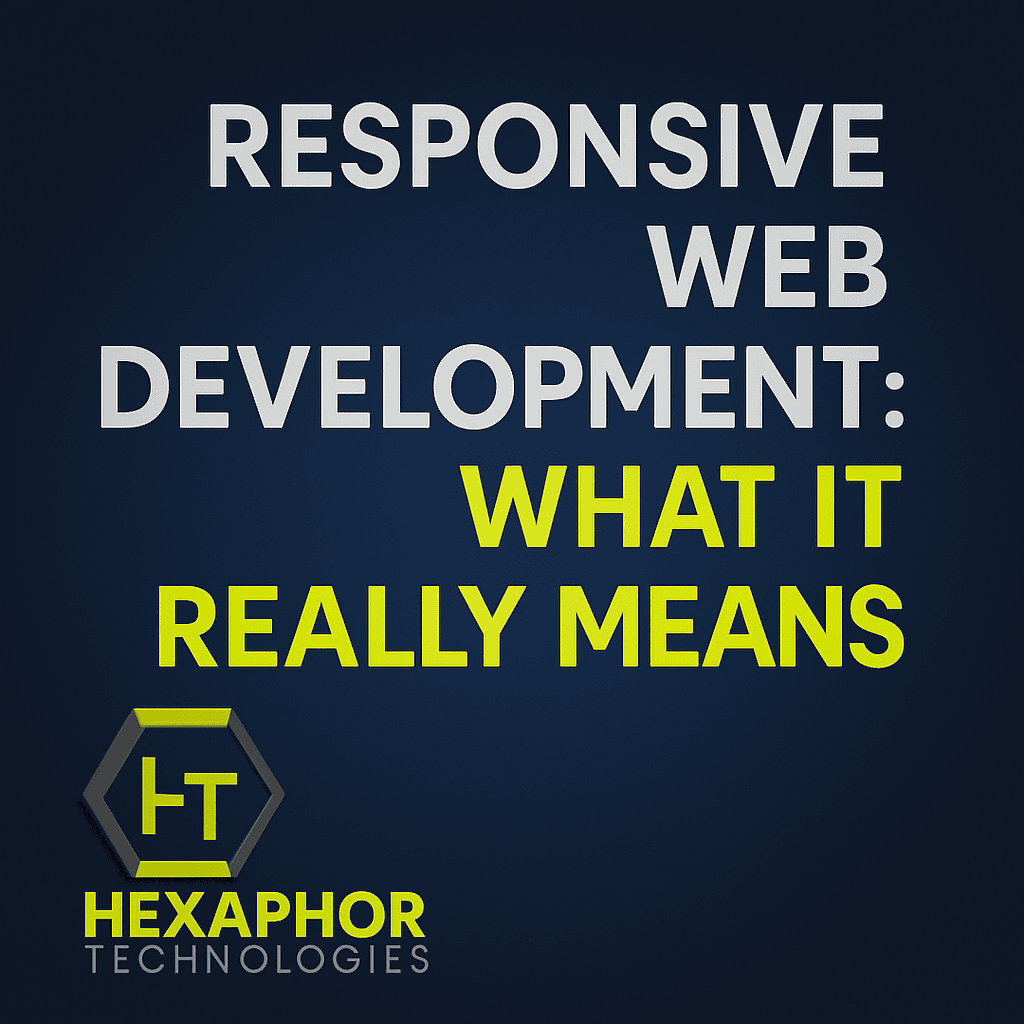
Today, users browse websites across dozens of screen sizes—smartphones, tablets, laptops, desktops, and even smart TVs. If your website isn’t designed to adapt to these devices, you risk losing traffic, credibility, and conversions.
That’s where Responsive Web Development comes in. But what does it really mean beyond just "looking good on mobile"? Let’s break it down.
Responsive Web Development is the process of creating websites that automatically adapt their layout, content, and functionality to fit any screen size or device.
Rather than creating separate mobile and desktop versions, a responsive website adjusts in real time using flexible grids, media queries, and dynamic content scaling.
✅ Fluid Grid Layouts – Elements scale proportionally with screen size
✅ Flexible Images & Media – Visuals resize without breaking layout
✅ Media Queries – CSS rules trigger based on screen dimensions
✅ Mobile-First Approach – Design begins from smaller screens up
✅ Optimized Touch Interactions – Buttons, forms, menus respond to taps
🔧 It’s not just about design—it’s about function, performance, and user experience.
Google uses mobile-first indexing, meaning the mobile version of your site is the primary source for ranking.
A responsive site:
Reduces bounce rates
Increases page speed
Improves dwell time
Supports better UX across devices
📊 Result? Higher positions in search results.
Whether on a phone or a 4K monitor, users should have:
Clear content readability
Seamless navigation
Fast load times
Smooth media display
💡 Responsive development ensures this uniformity across all screen types.
A broken or inconsistent layout damages trust. A responsive website:
Looks professional
Reflects modern standards
Reinforces brand identity everywhere
🌍 Consistency across platforms = a stronger brand image.
A responsive site:
Adapts CTAs to screen size
Improves form usability
Minimizes friction in the buyer journey
📲 Mobile users convert 5x better on responsive sites.
Instead of maintaining separate desktop and mobile versions, a single responsive site:
Streamlines updates
Reduces bugs
Saves dev time and costs
🔁 One codebase, all devices.
| Feature | Responsive | Adaptive | Separate Mobile Site |
|---|---|---|---|
| Layout Flexibility | High | Medium | Low |
| Maintenance | Easy (1 site) | Moderate | Difficult (2 sites) |
| EO Friendly | Yes | Yes | Less effective |
| Cost Efficiency | High | Medium | Low |
Responsive Web Development Best Practices
Use mobile-first CSS design
Minimize JavaScript for faster loading
Optimize images with srcset and WebP formats
Use REM/EM instead of fixed pixels
Test on real devices, not just emulators
Apply semantic HTML for accessibility and SEO
Design flexible navigation (hamburger menus, sticky headers)
Not exactly. Mobile-friendly sites may still be static. Responsive design actively adapts to all screen sizes.
With Progressive Web App (PWA) features, yes—certain content can be made available offline.
Depends on the size and features, but a basic responsive site can be built in 2–3 weeks.
Responsive Web Development is no longer optional—it’s the foundation of any modern website. It ensures that your brand is visible, usable, and impactful on every screen, from mobile to desktop and beyond.
At Hexaphor Technologies, we build fully responsive, SEO-optimized websites that:
Scale your digital reach
Enhance your user experience
Boost search engine performance
📢 Ready to upgrade your website? Let’s make it responsive, fast, and future-ready.